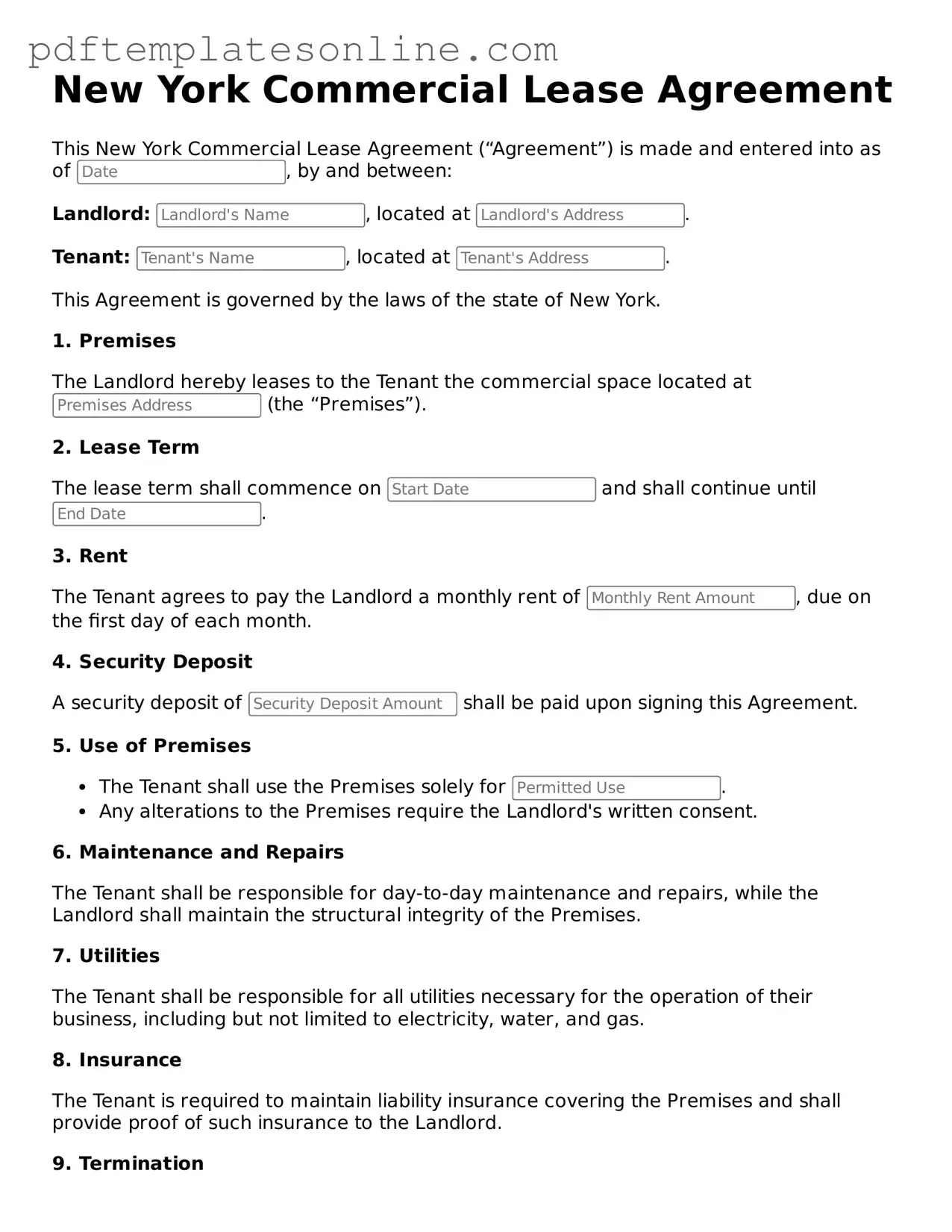When filling out the New York Commercial Lease Agreement form, many people inadvertently make mistakes that can lead to complications down the line. Understanding these common errors can help ensure a smoother leasing process.
One frequent mistake is failing to clearly define the leased premises. It is crucial to specify the exact location and boundaries of the space being leased. Vague descriptions can lead to misunderstandings about what is included in the lease.
Another common error involves neglecting to outline the lease term. The lease should clearly state the start and end dates. Without this information, both parties may have different expectations about the duration of the lease.
Many individuals also overlook the importance of detailing rent payment terms. This includes not just the amount, but also the due date, acceptable payment methods, and any late fees that may apply. Clarity in these terms helps prevent disputes later on.
Some people mistakenly assume that all modifications are allowed without written consent. It’s essential to specify what alterations can be made to the property and under what conditions. This protects both the tenant and landlord.
Another mistake is failing to include maintenance responsibilities. Clearly defining who is responsible for repairs and maintenance can save both parties from frustration and unexpected costs.
People often forget to address renewal options. Including terms for lease renewal can provide security for tenants and flexibility for landlords. Without this clause, tenants may find themselves unexpectedly searching for new premises.
Some lease agreements also lack clear termination clauses. It is important to specify how either party can terminate the lease, including any notice requirements. This clarity can prevent misunderstandings if circumstances change.
Another common oversight is not considering the use of the premises. The lease should outline what activities are permitted. This protects landlords from liability and ensures tenants can operate their businesses as intended.
Lastly, many individuals fail to review the entire lease thoroughly before signing. It is vital to read the document carefully and seek clarification on any confusing terms. Taking the time to understand the lease can prevent costly mistakes in the future.
